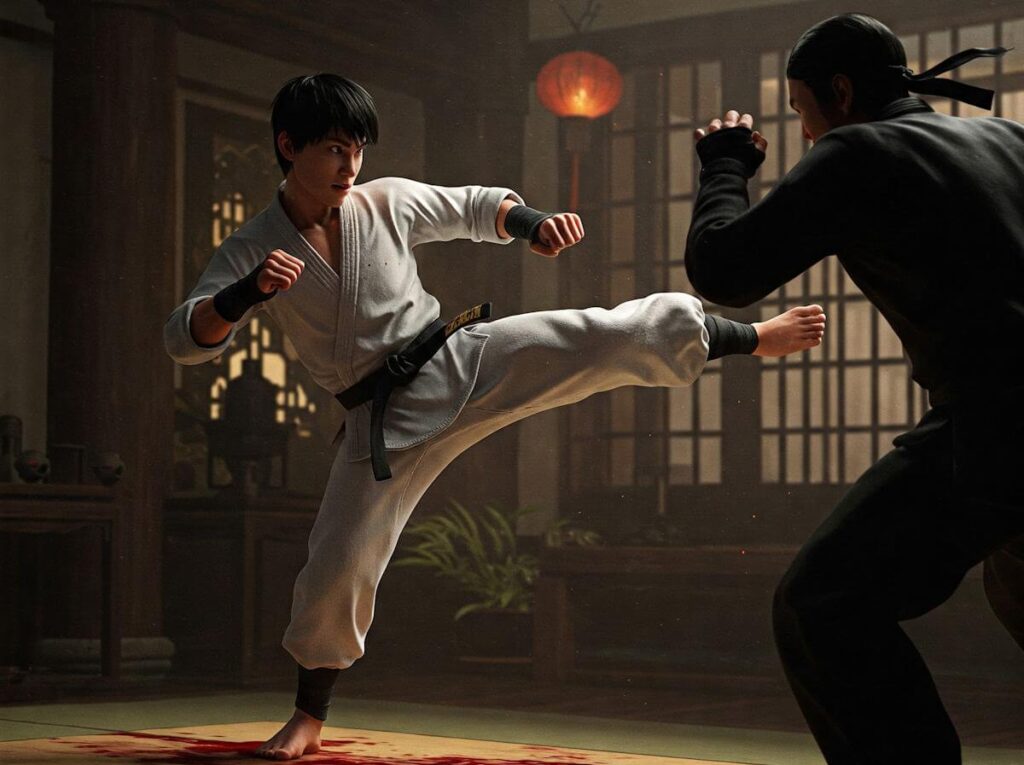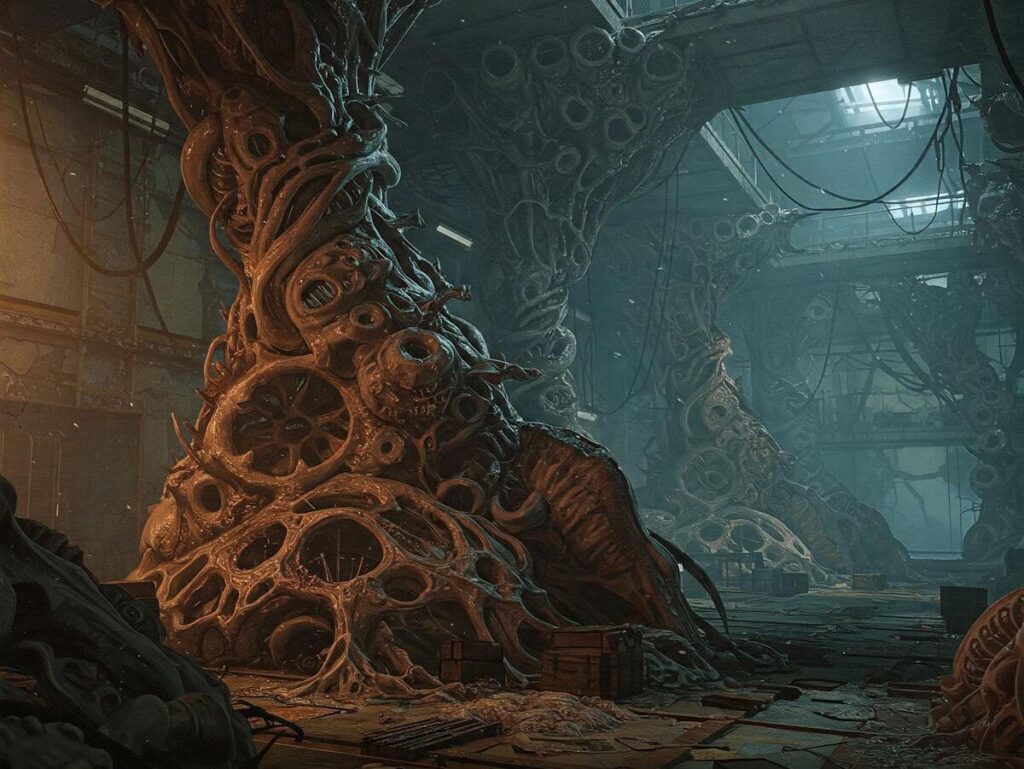The combat system in Sifu is a distinctive feature that sets the game apart from other martial arts titles. At its core, the mechanics revolve around a deep understanding of timing, strategy, and skillful execution. Players are encouraged to think critically about their actions and anticipate their opponents’ moves, fostering an engaging and tactical gameplay experience. This approach emphasizes the philosophical underpinnings of martial arts, where the mastery of technique and movement is paramount.
In Sifu, players control a character who is on a quest for revenge, utilizing a variety of martial arts techniques to confront numerous adversaries. The combat mechanics are rooted in realism, reflecting actual martial arts principles that prioritize control, agility, and precision. Each encounter requires players to adapt their strategies based on the unique skills of their opponents, enabling them to exploit weaknesses while remaining vigilant against counterattacks.
A significant aspect of Sifu’s combat system is the concept of timing. Learning to execute attacks, blocks, and dodges at the right moment can determine the outcome of a fight. Players quickly discover that rhythm is essential; successful combos often rely on carefully timed sequences. This element not only enhances the immersion but also reflects the fluidity and unpredictability of real-life combat scenarios.
Additionally, the game introduces a mechanic that allows players to age each time they succumb to defeat, which plays a crucial role in shaping their fighting style and abilities. This innovative feature means that players must continually refine their strategies and adapt to the aging mechanic, mirroring the evolution of a martial artist over time. Understanding these dynamics is essential for players to master Sifu’s combat system, paving the way for an exciting martial arts journey.
Understanding the Combat Mechanics
At the heart of Sifu’s immersive experience lies its intricate combat mechanics, which are essential for succeeding in this dynamic game. Mastering these mechanics is crucial for players who seek to navigate the challenging scenarios presented throughout their journey. The combat system comprises various key elements, including attacks, dodges, blocks, and combos, each playing a vital role in the player’s overall effectiveness during confrontations.
Attacks in Sifu are categorized into light and heavy strikes. Light attacks are quick and allow for chaining into combos, providing opportunities to overwhelm opponents with speed. In contrast, heavy attacks deal more damage and can break through an enemy’s defenses. Understanding the timing and application of these strikes is critical for maintaining an aggressive playstyle while also allowing players to adapt to different combat situations effectively.
Dodges are another fundamental aspect of the combat system. This evasive mechanic enables players to quickly maneuver away from incoming attacks, thereby setting the stage for counterattacks. The timing of dodges must be precise, as successful evasion not only avoids damage but can also create openings for retaliatory strikes. Mastering this skill requires a keen awareness of enemy patterns and the ability to read their movements.
Blocking functions as a defensive mechanism, allowing players to mitigate damage received from strikes. However, reliance on blocking without following up with movements can lead to vulnerability, especially against more skilled opponents who can exploit openings. Incorporating blocks into a broader strategy, including dodges and attacks, forms a well-rounded approach to combat.
Combos intertwine these mechanics, enabling players to execute sequences of moves that maximize damage while maintaining pressuring on opponents. Understanding the variety of available combos and their effects can provide substantial advantages in battles. By mastering these core mechanics and their interplay, players cultivate a robust combat style, instinctively blending offensive and defensive actions for peerless effectiveness in Sifu.
The Importance of Timing and Reflexes
A core element of Sifu’s combat system lies in the mastery of timing and reflexes, which can greatly influence the outcome of any engagement. Proper timing is essential not only for executing attacks effectively but also for effective defensive maneuvers and counter-attacks. Players who develop an acute sense of timing can unleash powerful offensive moves while simultaneously evading enemy strikes. This dynamic interplay makes timing a crucial skill for players aiming to improve their combat proficiency.
When executing an attack, the window of opportunity can be minuscule. Each character has different attack speeds and animations, and recognizing the precise moment to deliver a strike can maximize damage inflicted on enemies. By training their reflexes, players can respond more quickly to the actions of their opponents. This response time allows players to identify attacks as they are about to be executed, providing an opportunity to block or evade effectively. On the other side of the equation, being overly aggressive can lead to missed opportunities and potential vulnerabilities. Thus, a balanced and mindful approach to timing is essential.
Practicing specific techniques can enhance a player’s reflexes dramatically. Engaging in drills that focus on reaction time, such as timing attacks to narrowly avoid countering enemies, can cultivate a sharper awareness of combat flow. Additionally, reviewing gameplay footage can aid in observing both successful and unsuccessful timing instances. Players should consider what moments allowed for effective strikes or comfortable defenses and apply those lessons in future encounters. The journey towards mastering timing and reflexes may be challenging, but through consistent practice and observation, players will significantly enhance their overall performance in Sifu’s engaging and intricate combat system.
Mastering Combos and Advanced Moves
In the realm of Sifu’s combat system, the mastery of combos and advanced moves is paramount for achieving combat excellence. The intricacies of chaining moves together allow players to unleash devastating attack sequences that can catch opponents off-guard, pivotal in gaining the upper hand in confrontations. To effectively perform these advanced combos, players must first familiarize themselves with the basic moves and their timings, as these serve as the foundation upon which more complex sequences are built.
Combos in Sifu are not merely about button mashing; rather, they require a calculated approach to timing and precision. Each character possesses unique abilities that can enhance specific combinations. Players should invest time in understanding their character’s skill set to discover which moves can be combined most effectively. Advanced moves often include transitions between strikes, grapples, and defensive maneuvers. Implementing these techniques demands not only mechanical skill but also an intuitive understanding of the enemy’s behavior patterns.
One effective strategy for chaining attacks involves leveraging the stagger mechanics inherent in Sifu’s combat. When an opponent is momentarily stunned, players are presented with a prime opportunity to execute a series of well-timed strikes. Utilizing the character’s momentum after hits can maximize damage output while maintaining offensive pressure. Additionally, the introduction of counter-attacks can transform defensive play into aggressive maneuvers; beautifully blending offense and defense makes for a compelling combat style.
Mastering combos and advanced moves ultimately enhances a player’s capability to adapt to different combat scenarios. An adept player will find joy not only in the ability to take down enemies efficiently but also in the creativity of developing unique sequences that reflect their play style. Enhanced mastery of these techniques ensures a richer gaming experience, empowering players to take on more challenging foes with confidence.
Utilizing the Environment in Combat
Sifu’s combat system uniquely emphasizes the significance of the environment in enhancing overall gameplay. Players are encouraged to think creatively and recognize that their surroundings hold potential advantages during encounters. This approach goes beyond sheer brawn; it highlights strategic thinking and adaptability, which can tip the scales in favor of those who understand how to leverage their environment effectively.
One of the key aspects of environmental utilization in Sifu is the ability to incorporate objects as weapons. The game presents various items such as tables, chairs, and other debris that players can interact with to deliver devastating strikes or block incoming attacks. For instance, players can grab a nearby chair and use it to create a makeshift shield, offering protection while simultaneously providing an opportunity to counterattack. Recognizing which objects are available and how they can function as weapons is crucial in turning the tide of battle.
Additionally, the environment allows for clever manipulation of enemy positioning. Players can lure opponents into confined spaces where their mobility is hindered or lead them into areas filled with hazardous elements. This tactical maneuvering not only isolates enemies but can also create openings for powerful combo attacks. For example, a player might back an opponent against a wall, limiting their escape routes and making them an easy target for follow-up strikes.
To maximize these advantages, players should actively scan their surroundings and remain aware of available opportunities. Practicing such strategies enhances not only the immediate combat experience but also overall game mastery. By adopting an environment-centric approach, players elevate their combat efficiency, securing victories with both creativity and intelligence.
Defensive Strategies: Blocking, Parrying, and Dodging
In Sifu’s combat system, developing a solid defensive game is pivotal to achieving mastery. Defensive skills, such as blocking, parrying, and dodging, are essential techniques that players must integrate effectively into their gameplay to enhance survivability and counterattack opportunities. Each of these maneuvers serves distinct purposes and can be strategically employed depending on the nature of the opponent’s attacks.
Blocking is the first line of defense against incoming strikes, allowing players to absorb damage without losing health. It is vital to time the block appropriately; executing it just before the opponent’s attack lands ensures maximum effectiveness. By anticipating the timing of strikes, players can create an opportunity to follow up with a counterattack. A well-timed block can also stun an opponent momentarily, leaving them vulnerable to further offensive actions.
Parrying, on the other hand, requires more precise timing than blocking. This technique involves deflecting an opponent’s attack with a swift, deliberate movement, often creating an opening for immediate counterattacks. To master the parry, it is crucial to study the opponent’s attack patterns and cues, as successful parrying hinges on understanding the rhythm of their strikes. A successful parry will disrupt the opponent’s flow, allowing for a powerful counterstrike.
Dodging serves as a mobility-based defensive tactic, enabling players to evade attacks entirely while maintaining the ability to reposition effectively. This technique is especially beneficial when faced with quick or unpredictable opponents. Players should focus on the timing of their dodges, anticipating not only when an attack will occur but also where it will land. The strategic use of dodging within the battlefield enhances overall agility and can be utilized to counterattack from advantageous positions.
Ultimately, mastery of these defensive strategies—blocking, parrying, and dodging—is fundamental for achieving proficiency in Sifu’s combat system. By practicing these techniques and honing the ability to read enemy movements, players can establish a more resilient fighting style, paving the way for successful encounters.
Learning from Defeat: The Aging System
In Sifu, players encounter a unique mechanic known as the aging system, which significantly influences gameplay dynamics throughout their journey. Each time a character falls in combat, they age a year, thereby impacting their abilities, health, and overall effectiveness in battles. This aging mechanism serves as a dual-edged sword, presenting challenges while simultaneously providing opportunities for growth and adaptation.
As players accumulate defeats, aging results in a shift in skills and physicality. While aging enhances certain abilities, such as wisdom and understanding of combat techniques, it can also detract from other essential aspects, like agility and health. This trade-off encourages players to reflect on their strategies and learn from their mistakes, emphasizing the importance of adapting one’s approach rather than relying solely on character development through aging.
Each aging milestone brings with it a moment of reflection. Players must assess their previous encounters, examining what went awry and what can be improved upon moving forward. It is essential to analyze not just the combat mechanics at play, but also to consider timing, positioning, and the efficacy of one’s moves against varying opponents. This process of introspection not only cultivates skill improvement but also enhances overall combat performance.
Furthermore, the aging system subtly encourages perseverance. Instead of viewing defeat as a setback, players are prompted to regard each loss as an integral part of the learning process. By embracing failure and using it as a teaching moment, players can hone their expertise not only in combat mechanics but also in strategic thinking. The aging system thus becomes a vital component, inviting players to embrace resilience and adaptability, key traits in defeating the game’s formidable challenges.
Character Progression and Skill Trees
In Sifu, character progression is a vital component of the gameplay experience, allowing players to refine their combat abilities and enhance their overall effectiveness in battle. Central to this progression are skill trees, which provide a structured method for players to choose and develop specific skills that align with their preferred playstyles. As players navigate through Sifu’s challenging environment, they encounter numerous opportunities to upgrade their characters, making informed decisions regarding which skills to prioritize is essential for maximum combat potential.
Each skill tree in Sifu is designed to cater to distinct approaches to combat, whether it emphasizes raw power, agility, or mastery of various martial arts techniques. Players must assess their individual strengths and preferences to make strategic selections. For example, a player who favors a quick and nimble combat style might prioritize skills that enhance speed and evasion, enabling them to outmaneuver opponents. On the other hand, someone who prefers a more powerful approach might focus on skills related to increasing damage output or improving resilience in fights.
Investing in specific skills can significantly impact combat effectiveness. As players allocate points in skill trees, they unlock abilities that can create devastating combinations, bolster defensive maneuvers, or enhance offensive strikes. Furthermore, the benefits of these skills are often amplified when combined with the player’s unique strategies, allowing for a richer gaming experience. Knowledge of how different skills interact becomes crucial for players aiming to master Sifu’s combat system fully. In conclusion, understanding character progression and skill trees not only equips players with the tools needed to succeed but also empowers them to express their individuality through their combat style in Sifu.
Conclusion: Embracing the Journey to Mastery
Mastering Sifu’s combat system is not merely an endpoint; it is an ongoing journey that demands dedication, resilience, and patience. As players engage with the mechanics and intricacies of Sifu, they will find that each encounter is an opportunity for growth. The challenges presented by the game are designed to enhance both skill and understanding, inviting players to analyze their moves and refine their techniques continuously.
The key to progress in Sifu lies in consistent practice. Familiarizing oneself with various combat styles and learning to adapt to different opponents will foster a sense of resilience. As players encounter difficulties, it is essential to maintain a positive mindset and view each setback as a stepping stone toward mastering the art of combat. As players invest time and effort into their training, they will inevitably notice improvements in their performance and game strategy.
Additionally, embracing the combat system’s invaluable feedback loop is crucial. Players are encouraged to reflect on their gameplay, identify areas for improvement, and implement new strategies in subsequent rounds. This iterative process not only cultivates personal growth but also deepens the appreciation for the complexity and beauty of Sifu’s martial arts. The more one engages with the combat system, the more fluid and instinctive their gameplay will become.
In conclusion, as players embark on their journey within the world of Sifu, it is vital to maintain persistence and adaptability. The road to mastery is paved with challenges and obstacles, yet it is these very experiences that cultivate expertise. Embrace the journey, enjoy the process, and strive for continuous improvement as you navigate through Sifu’s combat system. Your dedication will ultimately lead to profound mastery and a more enriching gameplay experience.





